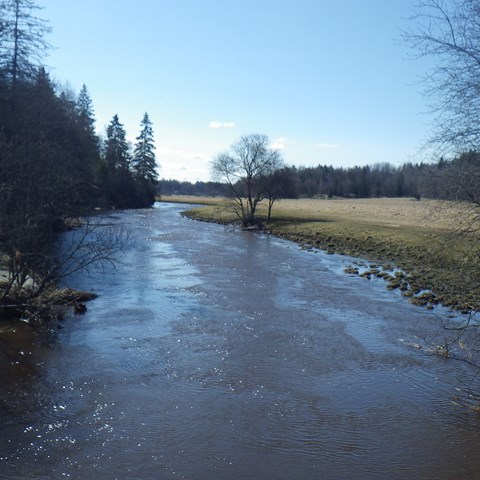Introduction
A significant proportion of the total Phosphorus (P) load in streams and rivers is transported in particulate form associated with fluvial suspended sediments. It is also well established that different P forms and fractions have different effects on eutrophication and degradation of surface water quality. Hence, new information on P fluxes, storage, mobilization and bioavailability within agricultural streams on a temporal and spatial scale appropriate for catchment scale management policies is a promising way forward for surface water eutrophication control. However, few studies have specifically characterized and quantified P species within streambed sediments and fewer still in fluvial suspended sediments.
Our project (which involves research teams in three countries) has generated new knowledge on the stability and bioavailability of P species in fluvial suspended sediment needed for assessments of in stream primary production and degradation of water quality.
The key output for the Swedish part of the project was information on different P species in fluvial suspended sediment and the variation over seasons, as well as dynamic modelling of critical source areas (CSA) in small agricultural catchments.
Methods
The study started with data analyses of the 21 well-monitored small agricultural catchments (2–35 km2) in Sweden with 25+ years of water quality data. At 8 of these catchments, the intensive monitoring includes flow-proportional stream water sampling, analysis of groundwater quality, yearly crop management surveys and soil characterization. Sampling campaigns of fluvial and streambed sediment were conducted using modified in-stream sediment traps and sediment cores in three of these catchments.
Aqueous nutrient concentrations from the monitoring program were used. Fluvial and streambed sediment P species were analysed using sequential chemical extractions.
Results from the sampling campaigns and speciation analysis were used for increased understanding of seasonal variations, as well as spatial variations between catchments depending on catchment properties. As well as learning and applying state-of-the-art techniques for assessing P speciation and availability, the PhD student at SLU used different trend analysis techniques to analyse changes in water quality in 11 monitoring catchments as well as explore relations between P and suspended sediment and catchment characteristics. In addition, the established relations were also tested on larger, more mixed land-use catchments with good results. A new dynamic distributed erosion model was also developed. The focus of the modeling efforts was on capturing the spatial variability in the mobilization and delivery of the suspended sediment from terrestrial systems to ditches and streams, with consideration taken to topography, soils' erodibility, vegetation cover and soil management practices.
Funding and participants
The project was funded by Formas and was be a part of JPI Eutro-Sed project involving three main partners: SLU, Trinity College Dublin, and the Canadian Light Source at University of Saskatchewan (UoS). The Swedish work was carried out as a PhD project named “Sources, composition and transport of fluvial suspended sediment and attached phosphorus in agricultural catchments: A cross-scale anlaysis” that was defended and ended in October 2022.
Results
Sandström, S., M.N. Futter, K. Kyllmar, K. Bishop, D.W. O'Connell and F. Djodjic. 2020. Particulate phosphorus and suspended solids losses from small agricultural catchments: Links to stream and catchment characteristics. Science of The Total Environment: 134616. doi:https://doi.org/10.1016/j.scitotenv.2019.134616.
Sandström, S., M.N. Futter, D.W. O'Connell, E.E. Lannergård, J. Rakovic, K. Kyllmar, L.W. Gill and F. Djodjic. 2021. Variability in fluvial suspended and streambed sediment phosphorus fractions among small agricultural streams. Journal of Environmental Quality. doi:https://doi.org/10.1002/jeq2.20210.
Sandström, S., Markensten, H., Futter, M. N., Kyllmar, K., O’Connell, D. W., Bishop, K., & Djodjic, F. (2023). Distributed dynamic modelling of suspended sediment mobilization and transport from small agricultural catchments. Frontiers in Environmental Science. Doi:https://doi.org/10.3389/fenvs.2023.1196048
Sandström, S., Lannergård, E. E., Futter, M. N., & Djodjic, F. (2024). Water quality in a large complex catchment: Significant effects of land use and soil type but limited ability to detect trends. Journal of Environmental Management, 349, 119500. https://doi.org/10.1016/j.jenvman.2023.119500
Sandström, S. (2022). Sources, composition and transport of fluvial suspended sediment and attached phosphorus in agricultural catchments: a cross-scale analysis. Dissertation, Swedish University of Agricultural Sciences.
